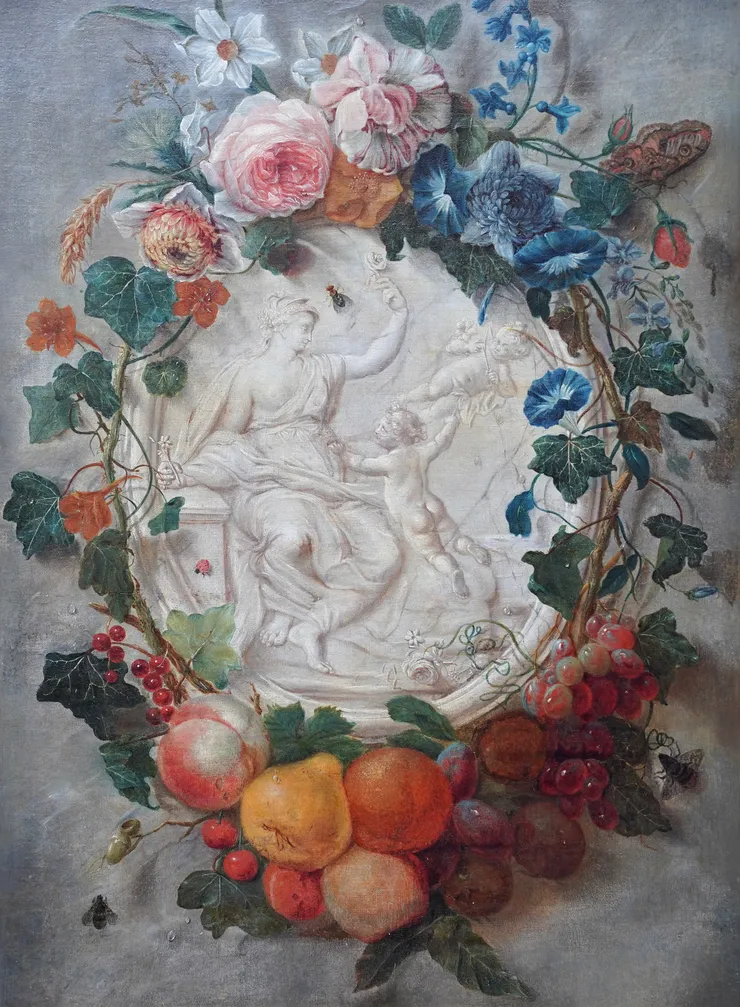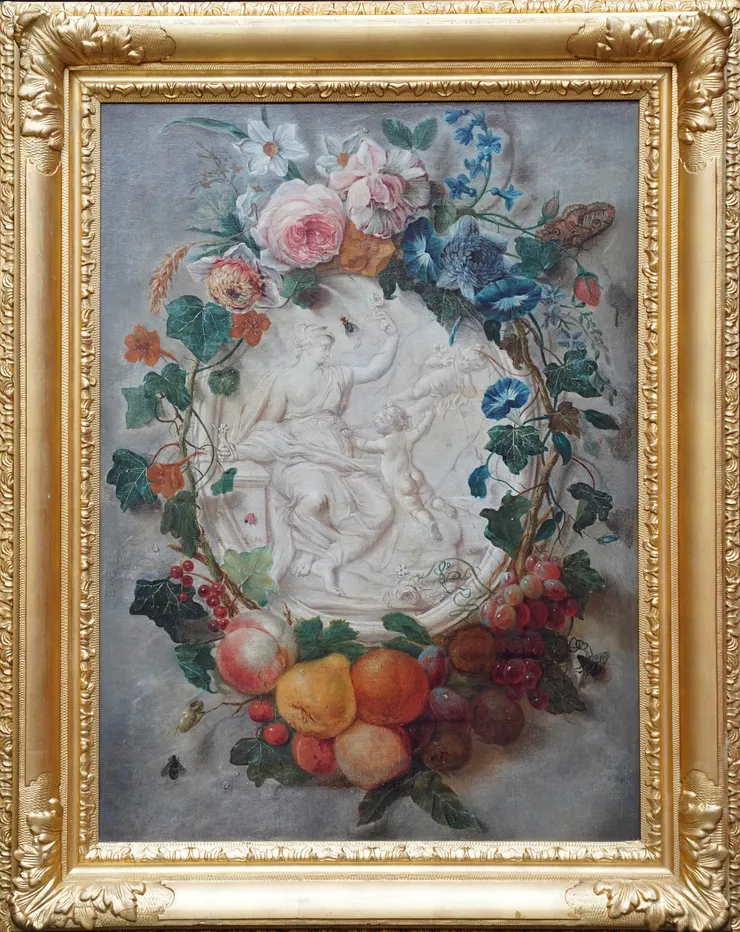Johann Amandus Winck (1748-1817)
| Artist Name | Johann Amandus Winck (1748-1817) |
|---|---|
| Title | Fruit and Flower Garland Round Intaglio of Putti |
| Description | This superb German Old Master still life oil painting is attributed to circle of Johann Amandus Winck and also shows the influences of the Dutch Old Masters. Painted circa 1780 the painting depicts a delicate garland of fruit and flowers surrounding a white Trompe l'oeil classical female figure and two putti. The garland consists of ivy, morning glory, roses and daffodils at the top and grapes, plums, peaches and pears at the bottom along with several insects including a beautiful moth. The details and depiction of the different textures are superb. This is a beautiful painting showing the influence of the Dutch Old Masters such as Huysum and Horemans and has excellent provenance. |
| Provenance | The Collection of John Bouverie (d. 1750), thence by descent to his wife Anne Bouverie (d. 1757), thence by descent to her brother John Hervey (d. 1764), thence by descent to his son Christopher Hervey (d. 1786), thence by descent to his aunt Elizabeth Bouverie (d. 1798), by whom bequeathed to Sir Charles Middleton, later 1st Baron Barham (d. 1813) and thence by descent through the present owner's family. |
| Medium | Oil on Canvas |
| Size | 20 x 26 inches |
| Frame | Housed in an ornate gilt frame, 33 inches by 27 inches, in good condition. |
| Condition | Good condition. |
| Biography | Johann Amandus Winck (1748-1817) ranks as one of the leading German still-life painters of the late eighteenth and early nineteenth centuries. He began his artistic training under his father, Johann Chrysostomus Winck (1725-95), who was court painter to the Prince-Bishopric of Eichstätt. Johann Amandus continued his studies in Munich under his uncle, Thomas Christian Winck (1738-97), court painter and official scene painter to the Electorate of Bavaria. As early as 1777 Johann Amandus produced four Gobelin designs for the Bavarian Court – a commission he almost certainly owed to his uncle’s influence at court. In the 1790s, uncle and nephew are known to have worked together on the completion of a fresco scheme. Winck took up still-life painting at an early age. He was a specialist in Frucht- und Blumenstücke – still lifes combining fruits and flowers. But he also produced breakfast and hunt pieces and still lifes of vegetables. Many of his still lifes were conceived as pendants and almost all are signed and dated. In his later career a stream of courtly commissions were lavished on him. Two of these were the important supra porte which he executed for the Munich palaces of Nymphenburg and Schleißheim in the 1790s. German eighteenth-century still-life painting owed an important debt to the influence of Dutch seventeenth-century masters. For their own opulent compositions many German painters like Johann Martin Metz (1717-89), Caspar Arnold Grein (1765-1834) and Johann Amandus Winck drew on the sumptuous arrangements of predecessors like Abraham Mignon (1640-79) and Jan van Huysum (1682-1749), whose works could be studied in Munich’s princely collections. It is not inconceivable that Winck received tuition from Antwerp-born Peter Jacob Horemans (1700-76), painter to the Bavarian court. This is strongly suggested by the parallels his work shows with the compositional schemes deployed by Horemans in his still lifes, many of which were also composed as pendants. |
| Price | £10000 |

